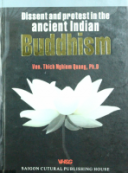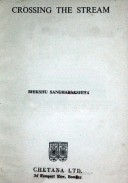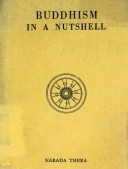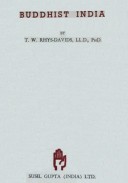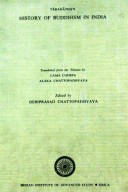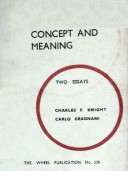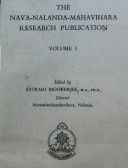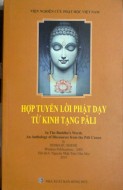Tìm Sách
Sách tiếng Anh-English >> Dissent and protest in the ancient Indian Buddhism
Thông tin tra cứu
- Tên sách : Dissent and protest in the ancient Indian Buddhism
- Tác giả : Ven. Thich Nghiem Quang, Ph.D
- Dịch giả :
- Ngôn ngữ : Anh
- Số trang : 259
- Nhà xuất bản : Saigon Cultural Publishing House
- Năm xuất bản : 2008
- Phân loại : Sách tiếng Anh-English
- MCB : 12100000011589
- OPAC :
- Tóm tắt :
Thesis submitted to the Unỉversity of Delhỉ for the award of the degree of DOCTOR OF PHILOSOPHY Bỵ Ven. T.N.Q. TRAN DONG NHAT Under the supervision of Dr. ANITA SHARMA
PREFACE
Buddhism is a universal religion. It is very lively and the most scientific religion. It benefits not only one community, nation or religion but the whole mankind. Lord Buddha had traveled nook and corner of India after Enlightenment to preach his religion for forty-five years. His words are preserved in three Baskets which are technically called the Tipittaka. Lord Buddha had brought harmony and peace in a strife stricken ancient Indian society of the Sixth century B.C. Buddhist’s doctrines are based on reason. These doctrines are relevant even in present world to dispel social, moral, economical, and religious evils.
From a philosophical perspective, Buddhism is a pure and harmonious community. Buddhism stands for the democratically elected leader and supports freedom of speech. As a matter of fact, the teachings of the Buddha are not only the basic teachings but also practical guidelines to make the Dhamma meaningful and applicable to daily life. Only one who lives with Dhamma will experience the qualities of the Dhamma. The method which the Buddha proposed for this process of self-examination is a subject of observation and critical study. His own philosophy was described as ehi-passika (dhamma should be come and seen) and paccatta veditabba (should be realised by oneself). Thus, it is considered as a means to help a person to steadily reach complete liberation (vimutti) from the edge of non- suffering. The Buddha-dhammas are like a raft which is left behind when one reaches the other, i.e., the Ultimate destination (Nibbana) and is not carried along.
CONTENTS
BIOGRAPHY
FOREWORD
PREFACE
Chapter I: INTRODUCTION
Chapter II: THE HISTORICAL BUDDHA AND THE DISSENTER
1. A general view
2. The Life of Buddha represented in Pali Canon
- The establishment of the Samgha
- The Samgha, the State and the Laity
3. Devadatta – the first Dissenter
- The genealogy relationship between Buddha and Devadatta
- Devadatta as depicted in Pali sources
- Devadatta depicted in Legends
- Devadatta and supernatural power
- Devadatta – the cause of Schism
4. Examination of the sources to find out the true Portrait of Devadatta
Chapter III: DISSENT AND PROTEST IN THE FIRST BUDDHIST COUNCIL
1. General view
2. Views of western scholar on the First Buddhist Council
- Finot and Obermiller’s critical views toward that of Oldenberg
- Investigation of Finot’s View
- Examination of Oldenberg’s hypothesis
- Poussin’s view on the First Council
- Censure of Poussin’s view
3. The traditional view on the First Council
- Sketch biography of the chief Council
- The causes of the First Council
- The elimination of Ananda
- Ananda’s misdemeanors
- The incident of Gavampati
4. The proceedings of the Council
- The Vinaya in Four Divisions (Caturvarga-vinaya)
- The Vinaya in Five Divisions (Panocavarga-vinaya)
- The Vinaya-matrika Sutra
5. The Dissenters
Chapter IV: DISSENT AND PROTEST IN THEECOND BUDDHIST COUNCIL
1. General view
2. The historical of Second Buddhist Council
3. Ten indulgences in Pali and Tibetan sources
- The Pali Culivagga
- The Vinaya Ksiudrakavastu
4. An observation of the Ten Points
5. Some problematic issues of Council – The motive behind the Council
- The controversial leadership of the Council and view of Scholars on historicity
6. Mahadeva-the Protester
Chapter V: RE-EXAMINATION OF THE METHODS AND APPROACHES OF THE STUDY OF SCHISM IN ANCIENT INDIAN BUDDHISM
- General view
- The analysis of establishment of Pali and Mahayana Canon
- The structure of Pali Suttas
- The establishment of Mahayana Suttas
- Buddhavacana and Mahayana Texts
3. The suggested method for approaching the Protester in Ancient Indian Buddhism
Chapter VI: CONCLUSION
BIBLIOGRAPHY
 Facebook
Facebook
 Google
Google
 Google+
Google+
